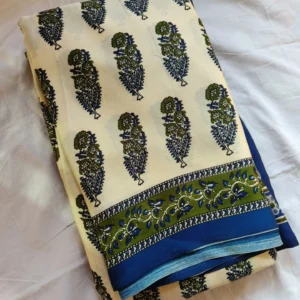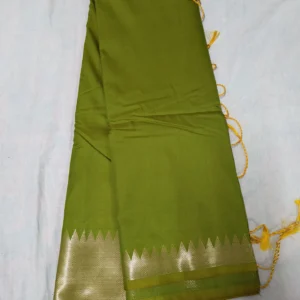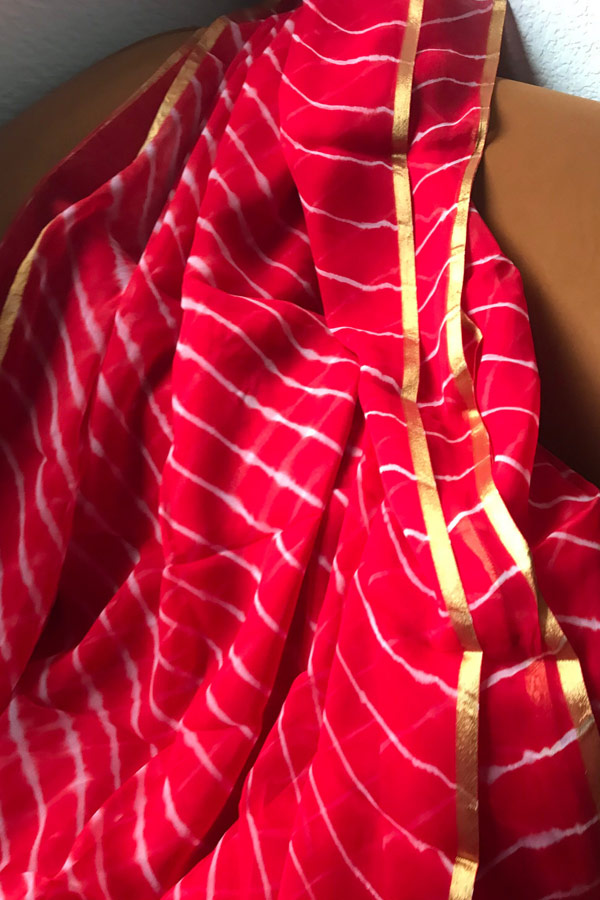Leheriya or Leheria is a traditional tie and dye technique that is practised in Rajasthan, India. The desert landscapes serve as a major inspiration to the craftsmen for this craft. They are inspired by the natural wave patterns made by the wind blowing on the desert sand and thus, it gets the name from the Rajasthani word Leheriya which means waves or wave-like. The main centres for the production of this craft are the cities Jaipur and Jodhpur.
History of Leheriya
The traces of the Leheriya style of tie and die can be found back in the 17th Century. The craft was highly patronised by the royal families of Rajasthan and the Rajput rulers. It was initially used to make the fabrics for their Saafa (turban) later, it was also used to make sarees for the women of the royal families. The royal houses had their signature colour and Leheriya patterns.
The colours used back then were derived from all the natural elements.
What are the Art and the Procedure of making Leheria?
The Craftsmen
The tie & dye craftspersons, who work in Jaipur, belong to the Neelghar Rangrez community. Most of them have lived in the Neelghar Nalla area of Ramganj for generations.
The Material used
Traditionally, the Leheriya craft is done mostly on thin cotton and silk fabrics. Nowadays, a lot of variation is seen in terms of the fabrics used for this craft. Today we can find Lehariya work done on Kota Doria, Chiffon, Organza, Georgette, etc.
The Process
- The extraordinary skills of the dyers play an extremely crucial role in this craft. They use a special method known as the resist-dyeing method.
- The cloth used for the process is light in colour for obvious reasons and is mostly of cotton or silk due to its dye absorbency abilities.
- The fabric is rolled diagonally, from one corner to the opposite selvedge. They are then tied at required intervals to resist them from the dye.
- Once the fabric is rolled and ready, it is dipped into a dye bath. The wave patterns are the result of the fanlike folds made before dyeing the fabric. The cloth is tied and folded in a way that striped patterns are created on it. When the fabric is opened post-dyeing, there is a colour on every alternate stripe.
- Mothara is produced by additional dyeing using the Leheriya technique. To produce this design the original resists are removed from the fabric dyed with the Leheriya technique. It is then rolled again and tied along the opposite diagonal. As a result of this technique, a checkered pattern is formed on the fabric, with small undyed areas that appear at regular intervals. Mothara means lentil and it derives this name because the undyed areas are of the size of a lentil.
- Traditionally, the craftsmen would tie and dip it in five various colours to get the desired patterns and shades.
- An extremely complex Leheriya design might even use up to nine tints and could take about a whole month to complete.
- Traditional Leheriya technique used natural dyes and would be several times.
- During the final stage of the preparation, the fabric is washed in indigo or alizarin. When finishing off the craft, indigo was used to get shades of blue and alizarin was used to get hues of red in the final step.
- As different workers have different imaginations and Leheriya is a handmade product, the result would be different on every fabric. Every fabric would have different patterns, fresh designs with vivid colours and a new look overall.
- These fabrics are usually sold with most of their resist ties still in place as it serves as proof of their authenticity.
How to Maintain Leheriya?
- Maintaining a fabric with leheriya dyeing is not very difficult, it can be maintained like any other cotton, chiffon or georgette fabric.
- Yet, one common problem that everyone who posses this craft face is colour bleeding. There is an easy and quick way that would fix this problem. One needs to soak the garment overnight in a bucket of water with a teaspoon of salt. This step would fasten the colour of the fabric.
What is the Current Scenario of Leheria?
Leheriya is a craft that has retained its original essence ever since its inception. Earlier, this craft was used to make the fabric for Saafa or turbans. Later, they used this beautiful and colourful technique to adorn the sarees. Nowadays, one can find this ornamentation on the surface of many garments such as Lehenga Cholis, Salwar Kameez, etc. It is no longer just a part of ethnic clothing anymore, one can find casual clothing ornamented with this technique as well. Also, Leheriya is not just limited to apparel anymore, one can find products such as scarfs, shoes, bags, and much more made out of Leheriya dyed fabrics.
Follow through the Wikipedia Page.

 Off White Semi Modal Silk Saree with Ajrakh Border
Off White Semi Modal Silk Saree with Ajrakh Border  Plain Green Semi Silk Saree with Zari Border
Plain Green Semi Silk Saree with Zari Border 